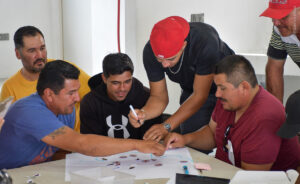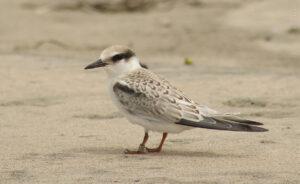We move towards an environmental solution to the contamination of the Cedritos Drain.
The Cedritos Drain is a channel about 46 kilometers long in the municipality of Navolato, Sinaloa, which has serious problems with silting and contamination due to a lack of adequate maintenance during the last 30 years. This is due to the fact that the canal transports sewage generated by agriculture, livestock, and fishing, as well as industrial and sanitary waste that comes from Culiacán and Navolato and from the water treatment plants in Culiacancito, El Tamarindo, and Culiacán North.
At Pronatura Noroeste we are moving towards an environmental solution for the conservation of this natural site. We accompany the local community and conduct technical level negotiations with the government and organizations of the region, all of which are interested in reversing the current condition of the drain.
The damage caused by the drain affects more than 15,000 inhabitants of the municipalities of Culiacán and Navolato. In parallel, it causes serious damage to various species of birds and other animals that use the drain as a habitat. This impact grows during the rainy season, as the flow of water is obstructed by the trunks, plants, and garbage that accumulate in the drain, which usually cause overflows and floods, to the detriment of some 4,000 residents of neighboring communities.
Undoubtedly, the greatest damage is in residential properties and, above all, in agricultural land, as well as in aquaculture and livestock activities, since the contamination of the drain is associated with a loss of quality in the products produced. This also generates risks to the health of the inhabitants, who are exposed to pathogens and other contaminants.
To address this problem, at Pronatura Noroeste we participated in the creation of a working group made up of the municipal, state, and federal governments, educational institutions, and civil society organizations. Within this group, long-term sustainable circular economy projects are promoted to counteract the contamination of the drain and strengthen human and community well-being in the affected area. Likewise, tasks are conducted, including cleaning the drain in the areas that have siltation, proper management of the vegetation, and training community promoters in the treatment of contaminated water and good environmental practices.
It should be noted that the inhabitants of the area surrounding the Cedritos Drain receive the support of the environmental laboratory staff of institutions such as the Mazatlán and Guaymas Regional Unit in Aquaculture and Environmental Management (CIAD) of the Universidad Autónoma de Sinaloa, the Politécnica de Sinaloa, and the H. City Hall of Navolato, in addition to the support provided by Pronatura Noroeste technical staff. Among the implemented activities is the planting of floating wetlands, called “chinampas,” to create biomass to provide tule fiber, which is used to make briquettes to generate fire and energy for cooking, thus avoiding the use of firewood.
The organizations and institutions that make up the working group for the conservation of the Cedritos Drain include:
- Sinaloa State Drinking Water and Sewage Commission (CEAPAS)
- National Water Commission (CONAGUA)
- Commission of Natural Protected Areas (CONANP)
- State of Sinaloa Secretariat of Sustainable Development (SEDESU-SIC)
- H. City Council of Navolato
- Pronatura Noroeste
- Center for Food and Development Research (CIAD) Mazatlán Unit
- Sinaloa Institute of Aquaculture and Fisheries (ISAPESCA)
- Association of Agricultural Producers (AUPA)
- Irrigation Module “Bachimeto 1-2”
















